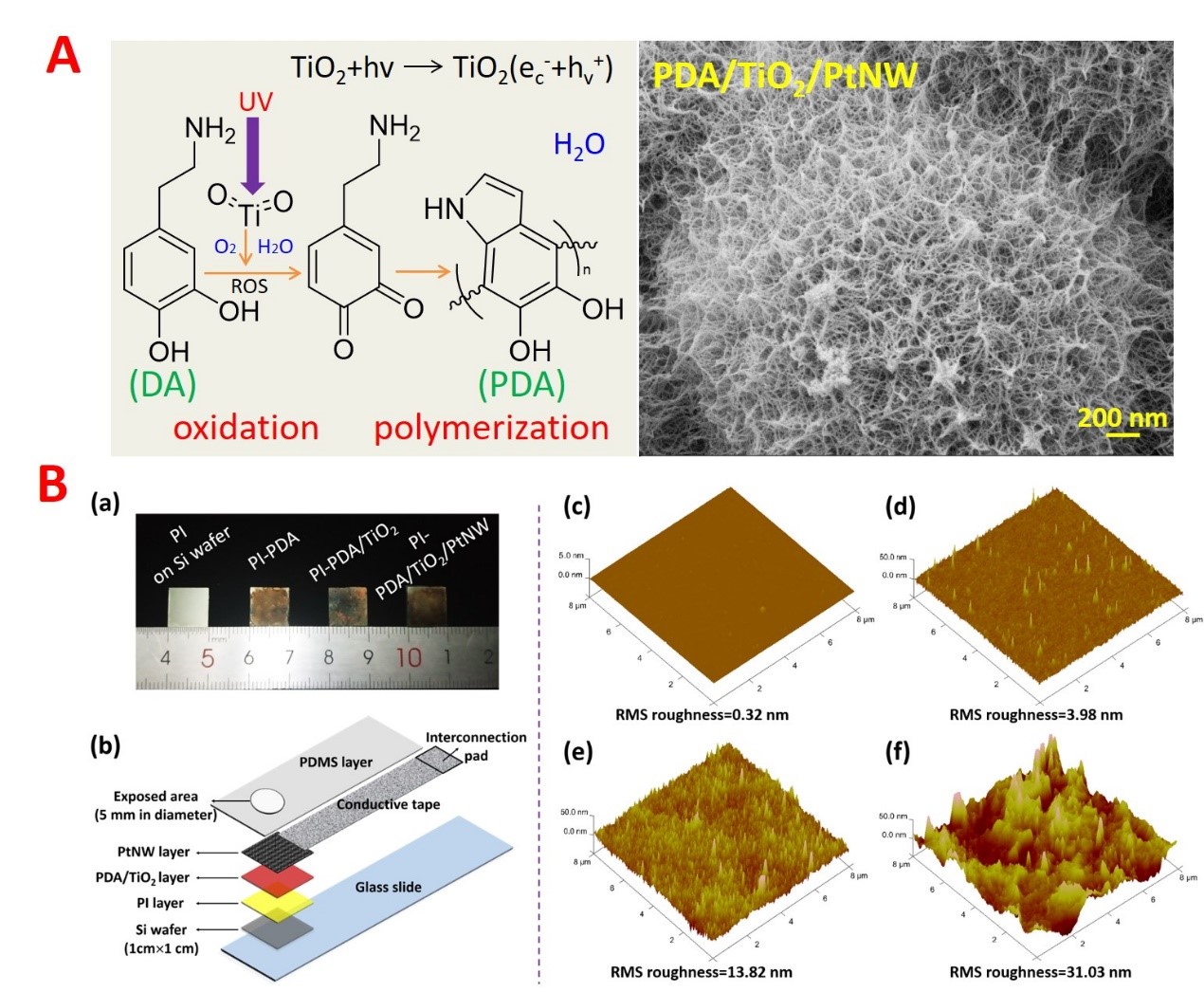Newly Proposed Strategy Offers Smart Flexible Neural Electrode with High Efficiency
With the rapid development of smart flexible electronics in wearable and implantable fields, it is urgent to prepare biomimetic electrode materials efficiently with simple operation, good biocompatibility and low cost, to obtain better stimulation/recording performance.
However, the Young's modulus (a measure of a solid's stiffness or resistance to elastic deformation under load) of the metal layer is quite different from that of flexible substrate, which leads to low adhesion, easy delamination and failure in the fabrication process of traditional flexible electronic devices.
Although the polymerization process is typically prolonged, the dopamine (DA) and its derivatives are promising for the fabrication of functional films and devices with excellent conductivity, bioadhesion and long-term stability.
In order to solve the above contradiction, Prof. WU Tianzhun’s group at Shenzhen Institutes of Advanced Technology, Chinese Academy of Sciences, based on their previous work on neural interfaces (Electrochia Acta, Advanced Materials Interfaces), proposed an accelerated deposition process using ultraviolet (UV) irradiation with the existence of nanotitanium dioxide (nano-TiO2) in order to realize a rapid and stable synthesis of polydopamine (PDA) films.
The in situ deposition process of nanostructured coatings such as platinum nanowire (PtNW) was also proposed on PDA adhesive layer for better electrical performance.
The proposed method reduced the time of PDA polymerization process to less than 1 h. It also increased the platinum (Pt) chelating rate with PDA (<1h) at room temperature, which was more than 10 times faster than the traditional photo-oxidation method.
Compared with the electrodes of the same size based on Ti/Pt sputtering, the impedance of the proposed PDA/TiO2/PtNW coated electrode was as low as 0.0968 ± 0.0054 kΩ at 1 kHz (reduction of 99.74%). An extremely high cathodic charge storage capacity (CSCc) up to 234.4±3.16 mC cm-2 was also observed, which was about 106.5 and 1.6 times higher than that of Ti/Pt and PDA/PtNW electrodes, respectively.
In addition to that, significant photocurrent polarization responses were presented for PDA/TiO2/PtNW electrodes with a stable current of -136.1 μA, exhibits excellent charge transfer and UV absorption capacities. This co-deposition method has demonstrated great potential to speed up the polymerization process and enhance the electrical performance for flexible electrodes with low cost.
The research results are highly operable and have a broad application prospect, which provides a new idea for the preparation of flexible electrodes and can be widely used in practical applications such as neural implants, biosensors, drug carriers and photoelectric electrode materials, etc.
The study entitled “Fast Polymerization of Polydopamine Based on Titanium Dioxide for High-Performance Flexible Electrodes " has been published in ACS Applied Materials & Interfaces.

Fig. A. (a) Schematic diagram of accelerated PDA polymerization with nano-TiO2 and UV, (b) SEM of PDA/TiO2/PtNW modified electrode.
Media Contact:
ZHANG Xiaomin
Email: xm.zhang@siat.ac.cn
Tel: 86-755-86585299
Download the attachment:
Fast Polymerization of Polydopamine Based on Titanium Dioxide for High-Performance Flexible Electrodes